Monday – August 28, 2017
Somehow I slept through the foghorn sounding loudly during most of the early morning hours. When I finally heard it, I rested with my eyes closed and listened to the somber sound. The ship had stopped rolling back and forth and I imagined the Rotterdam anchored somewhere, enveloped by fog.
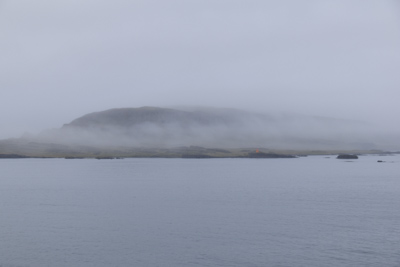
We had traveled from the Hebrides islands in northern Scotland to the southeastern shore of Iceland. I looked out to see the tiny town of Djupivogur, Iceland covered in mist and fog. It was 48 degrees and raining.
We had a leisurely breakfast then slowly made our way to the tender gangway. Thick fog hung over the high hills in the distance but it wasn’t raining and the sky over Djupivogur looked like it was brightening.
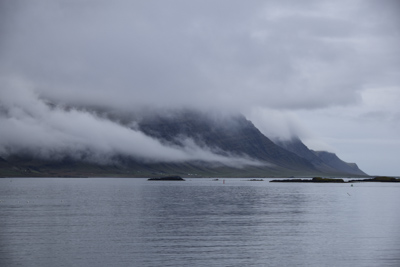
Djupivogur in the rain:
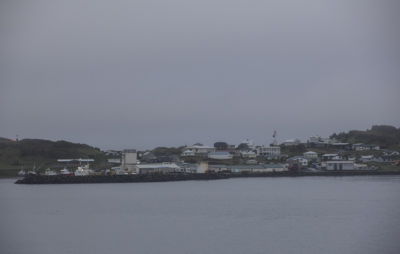
The tender transports began by 7:30 but I thought there was no need to rush out into the rain. We rode the tender to the dock in the middle of the town. I knew there were tall mountains surrounding Djupivogur but we couldn’t see them in the mist.
The main port was filled with fishing boats of all sizes. The white building on the left was the fish processing plant.

Djupivoggur was a charming village with a long history of fishing and trading since the 16th century. The main street:

The information center with cafe and small restaurant:

When we landed on shore, visibility all around us seemed to be improving. It was still a hazy gray day, but not too bad. There were several fishing boats in the harbor and the fish processing plant was working noisily.

The rain held off so we walked down the street to see what was there. The population of Djupivogur was about 400 people.

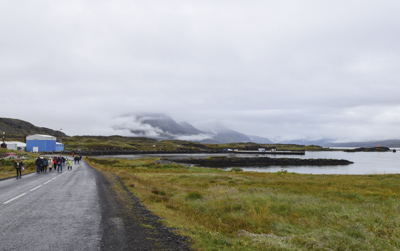
We followed the sign to see the outdoor sculpture called “Eggin i Gleoivik” (The Eggs of Merry Bay) by the world famous Icelandic artist, Siguour Guomundsson. These are 34 large-scale egg replicas which represent 34 native bird species.
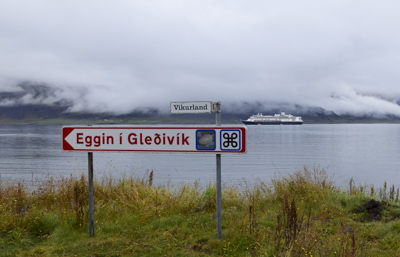
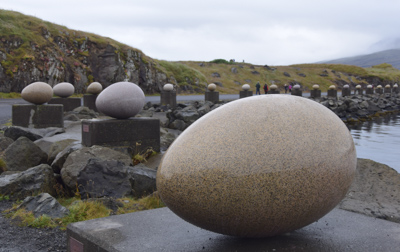
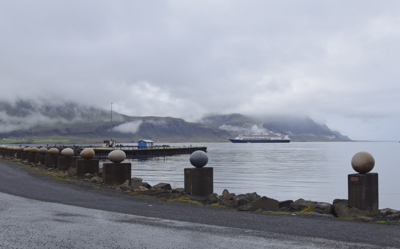
Along the road there was a quirky sculpture garden and museum called Bones, Sticks, & Stones:
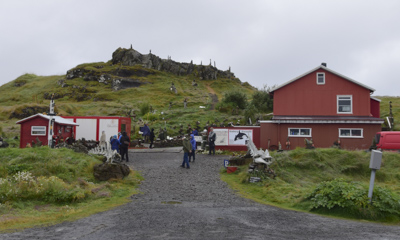
Djupivogur has been granted international “Cittaslow” (Slow Town) status. The town likes to show visitors Iceland in slow motion. A ‘slow city’ is an attempt for people to reconnect with their environment, nature, food, and unique crafts against a globalized world. Commercial signs are banned but local craftsmen are allowed to display signs.
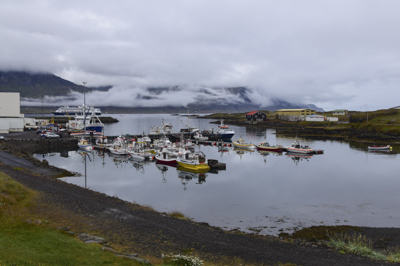
We walked across to the lovely Hotel Framtid on the other side of the harbor. The knotty-pine interior was warm and cozy. We took advantage of their free wifi and rested on comfortable chairs. The children from the local school were eating lunch in one of the hotel’s dining rooms.
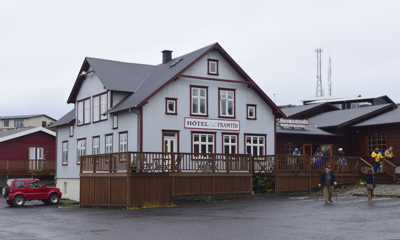
Looking across the harbor:
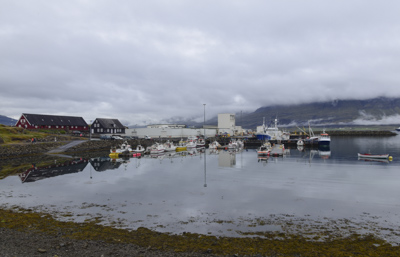
There were beautiful panoramic scenes everywhere. I imagine on a sunny day the surrounding mountains must be fantastic, unfortunately they were hiding behind heavy dense clouds.
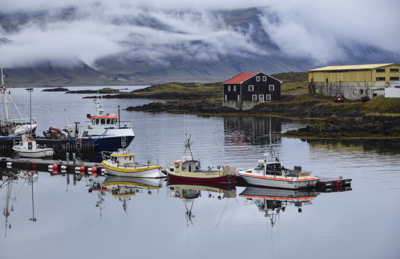
We rode the tender back to the ship, relieved that the rain held off giving us a chance to explore beautiful Djupivogur. The ship sailed away and went northward along the Icelandic coast.

We’re going to travel 183 nautical miles to the city of Akureyri on the northern coast of Iceland. Wow! What an adventure!!!